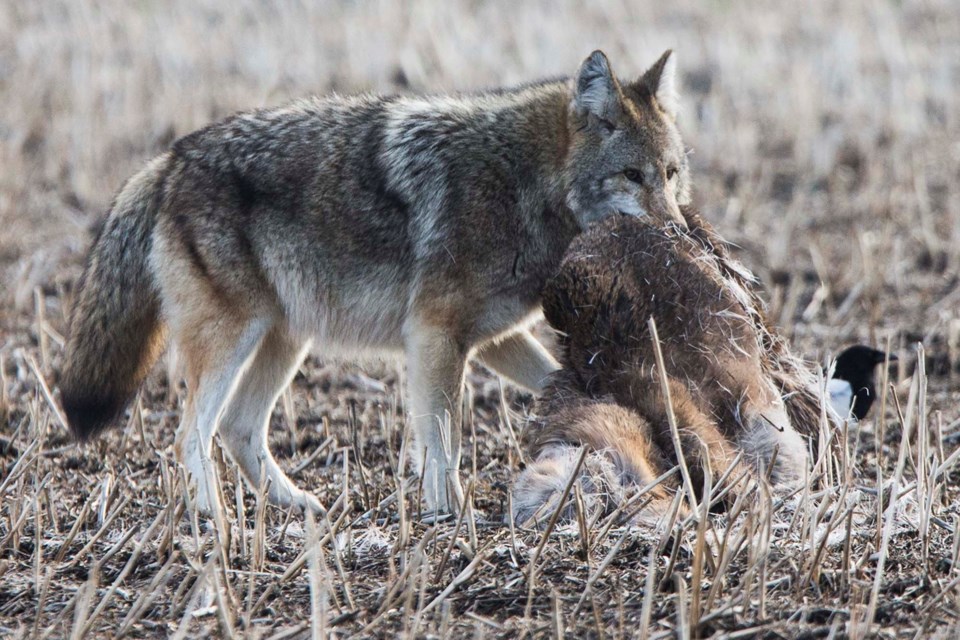Urban coyotes may be becoming more aggressive due to the effects of a high-carb diet on their guts, suggests new research from the U of A.
University of Alberta biologist Scott Sugden published a study Dec. 17 in Scientific Reports on the effects of human-made food sources on the gut microbiomes of urban coyotes.
Humans are having more contact and conflict with coyotes as more move into urban areas, said Colleen Cassady St. Clair, the U of A biologist behind the Edmonton Urban Coyote Project (under which Sugden’s study took place). Coyotes may be fleeing rural areas in favour of cities, where gun-toting hunters are banned and delicious rabbits and pets are plentiful.
While coyotes are usually carnivores, St. Clair said increased population densities and litter sizes may be pressing coyotes to seek out human food sources, such as compost heaps, bird-feeders, trash, and fruit.
Sugden and his team sought to see how an urbanized diet could affect the gut microbes of coyotes, as gut microbes influence the health and behaviours of their host.
High-carb diet?
Sugden and his team performed necropsies of 95 road-killed or hunted coyotes from the Edmonton region (30 urban, 65 rural).
“It’s a very bloody job,” he said, one that involved studying stomach contents and performing genetic analysis on coyote scat.
Using isotope analysis (human-made processed food tends to have a lot of corn, which contains distinct carbon isotopes), the team found that urban coyotes ate about 2.5 times more man-made food and about 25 per cent less prey (meat) than their rural cousins.
Urban coyotes also had poorer overall health, having half as much kidney fat (and therefore less overall fat) and 37 per cent bigger spleens (suggestive of more immune stress) than rural coyotes. They were also 50 per cent more likely to be infected with Echinococcus multilocularis – a parasite that can cause tumors when transmitted to humans.
The team found that urban coyotes had more Streptococcus and Enterococcus bacteria in their guts, which were associated with eating human food and poor health in dogs. Rural coyotes had more Fusobacteria, which was what you saw in healthy dogs that ate lots of protein.
Dogs with little Fusobacteria in their guts become more aggressive, and the same might be true with urban coyotes, Sugden said. One coyote the team studied had no Fusobacteria, and it had been killed after slaying a dog.
This suggests that high-carb urban diets were bad for the health of coyotes and could spark more conflict with humans, St. Clair said.
“In urban areas, coyotes can access types of food that are not nearly as good for them but keep them alive,” she said, which could explain why urban coyotes are becoming more numerous and more diseased than rural ones.
“They may not be thriving, but they are surviving.”
Other studies have suggested that these less healthy urban coyotes were the ones that were more likely to clash with humans, Sugden said.
“If we minimize coyotes’ access to human food, we’ll potentially mitigate health issues in coyotes and human-coyote conflict situations.”
Sugden and St. Clair said people should secure their trash and compost piles and clean up spilt birdseed to keep these human food sources away from coyotes. Residents should also shout at and harass urban coyotes to discourage human contact.
Sugden’s study is available at go.nature.com/2NtLByB. See edmontonurbancoyotes.ca for more on urban coyotes.




